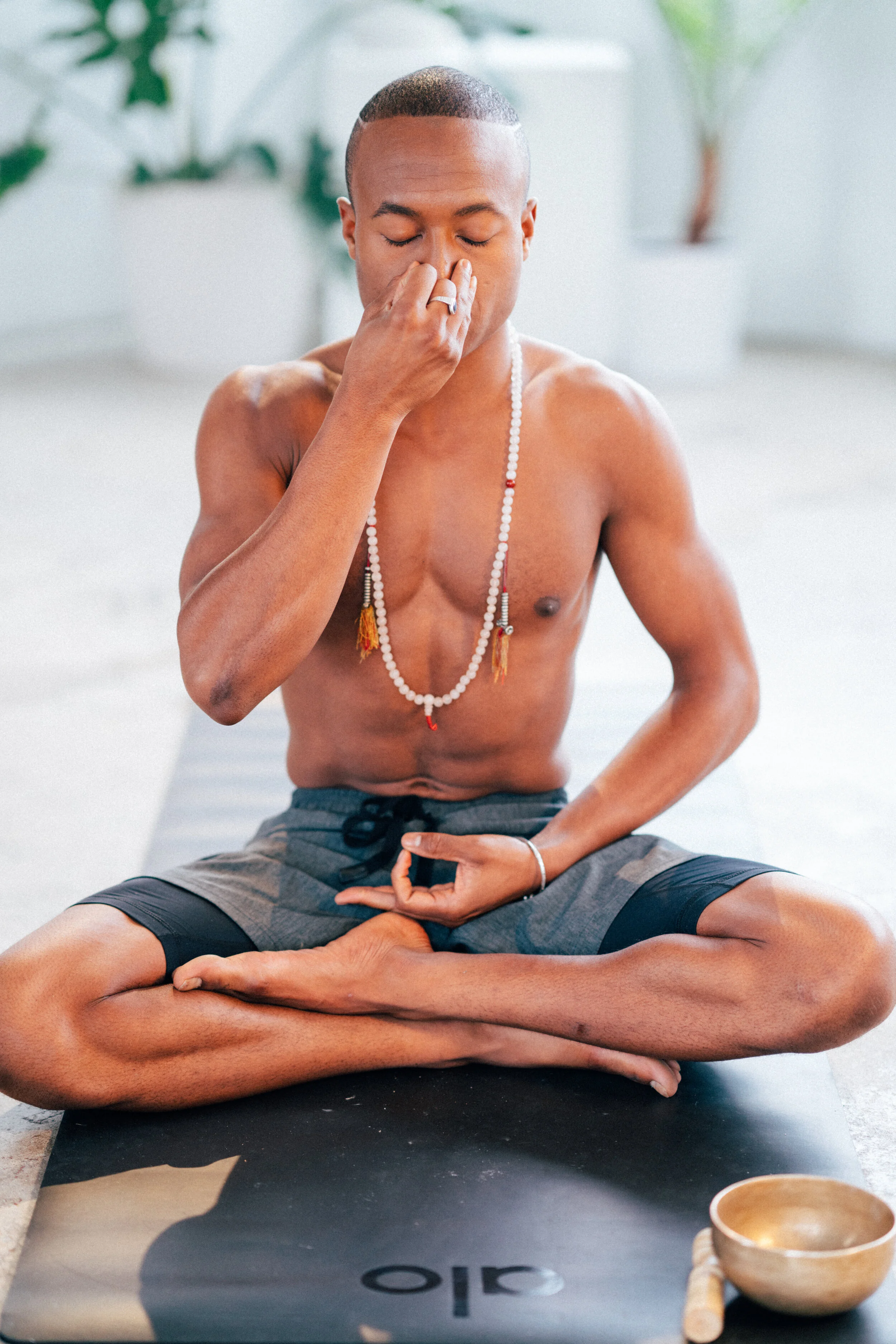What Is Pranayama? 5 Types of Yogic Breathing
Pranayama is the yoga practice of controlling the breath. It’s one of the 8 Limbs of Yoga as laid out by the sage Patanjali in the Yoga Sutras of Patanjali, a guide for living an intentional yogic life, more than 1,500 years ago. These breathing exercises have been shown to battle stress and anxiety, and can be long or short, simple or complex.
In yogic tradition, things go a little deeper. Prana refers to a life force that travels throughout your subtle body, like your chakras, on channels called nadis. If one of these channels is blocked, according to tradition, it can cause health problems.
In the Yoga Sutras, Patanjali lays out the three movements of pranayama:
Inhalation: Breathing in.
Exhalation: Breathing out.
Retention: Holding the breath at empty, full, or somewhere in between.
These movements are regulated by three factors:
Place: Where is the breath in the body?
Duration: How long is each breath?
Number: How many breaths?
There are many kinds of pranayama, and you can practice a lot of them in Dylan Werner’s The Breath Sequence on Alo Moves. These five will get you started.
Ujjayi Pranayama, or Victorious Breath
You may have already done this exercise, also referred to as ocean breath, in a vinyasa class. It adds a slight constriction to the throat to make a loud, distinct sound.
How to practice Ujjayi Pranayama:
Start in any position.
Take a normal inhale through the nose.
Gently constrict your throat as if you were fogging up a mirror, then exhale. This should create a strong, breathy noise.
Inhale with the same throat constriction.
2. Sama Vritti, or Equal Ratio Breathing
One of the easiest-to-remember pranayama exercises is Sama Vritti, which is equal-length inhales and exhales. Box Breathing is Sama Vritti with retention on either end of the breath. These instructions use a four-second breath, but as you get more comfortable with Sama Vritti, you can make the breaths longer or shorter, as long as they’re still even.
How to practice Sama Vritti:
Find a comfortable sitting or standing position with a neutral spine.
Inhale for four seconds through the nose.
Exhale for four seconds through the mouth.
Practice Sama Vritti with Dylan Werner in his Breath Sequence: Stress & Anxiety Relief class.
3. Nadi Shodhana Pranayama, or Alternate Nostril Breathing
Two of the biggest nadis are ida and pingala. Ida has lunar, creative, and feminine energy, and runs along your left side from seat to nostril. Pingala has solar, analytical, and masculine energy, and runs from your seat to your nostril on the right side.
Nadi Shodhana, or alternate-nostril breathing, is thought to balance your solar and lunar energy by clearing the channel from left to right and vice-versa.
How to practice Nadi Shodhana:
Come to a sitting or kneeling position with a neutral spine.
Gently close off your right nostril with your right hand* and inhale through your left nostril.
Release the right nostril and gently close the left nostril.
Exhale out the right nostril.
Leave your left nostril closed and inhale through the right nostril.
Release the left nostril and gently close the right.
Exhale through the left nostril.
*Traditionally, this exercise is done with your right hand controlling your nostrils in Vishnu Mudra and your left hand resting on your knee in Jnana Mudra, but it can be a little easier to rest your index and middle fingers on your forehead as you block either nostril with your thumb and ring finger.
Practice Nadi Shodhana with Talia Sutra’s Alternate Nostril Breathing class on Alo Moves.
4. Kapalabhati Pranayama, or Skull Shining Breath
Kapalabhati is used for cleansing the mind and body, along with gaining some extra energy. It involves a lot of force in your abdomen. If you’re feeling nauseous or you’re pregnant, you might want to skip this one. Start slow until you know how this breath makes you feel, then work up to an exhalation every one or two seconds.
How to practice Kapalabhati:
Start in a seated or kneeling position with a neutral spine.
Take a normal inhale in.
Let a forceful breath out through your nose by squeezing your belly button in toward your spine, creating an audible noise.
Relax for a normal inhalation.
Repeat.
Practice Kapalabhati before a playful ab workout in Naya Rappaport’s Core Fire class on Alo Moves.
5. Bhastrika Pranayama, or Bellows Breath
Like Kapalabhati, Bhastrika is a powerful breath with strong abdominal contractions, but it’s more smooth and even. In this technique, you control your breath by forcing your belly out and in — like a bellows.
Start in a seated or kneeling position with a neutral spine.
Expand your belly outward and let that motion lead a forceful inhale through the nose.
Reverse the motion: Like in Kapalabhati, squeeze your belly button in toward your spine for a forceful exhale.
Repeat.
Ready to build your pranayama practice? Explore our full library of breathwork classes with a 14-day free trial to Alo Moves.


